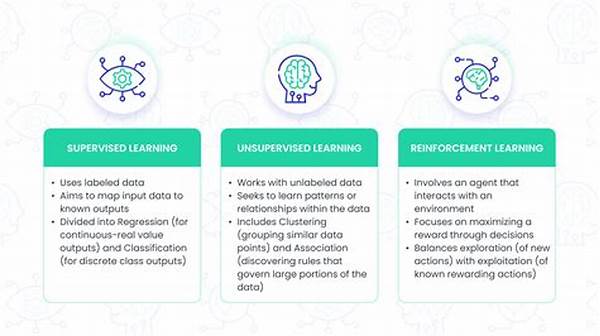Choosing Between Supervised and Unsupervised Learning
Let’s dive into the captivating world of machine learning, where data is as precious as treasure, and algorithms are your trusty guides leading you through the jungle of information. Picture yourself as a modern-day explorer, tasked with navigating the densely packed terrain of big data—a task both thrilling and daunting. Deciphering the secrets of this landscape requires understanding two primary approaches: supervised and unsupervised learning. These techniques are akin to the Swiss Army knives of data analysis, each with unique features and strengths. But the ultimate challenge is choosing between supervised and unsupervised learning, a decision that can significantly impact the outcomes of any data-driven expedition.
Supervised learning acts as a mentor, offering guidance by using a labeled dataset to train a model to predict outcomes. It’s like having a seasoned tour guide who can tell you not only about what you are seeing now but also what to expect around the next corner. On the other hand, unsupervised learning is where you embrace mystery, learning without the aid of labels. It’s akin to exploring uncharted territory, finding patterns and structures in data based on intuition and experience. Both methods bring their charm to the table, yet choosing between supervised and unsupervised learning hinges on your specific objectives and data characteristics.
The Key Factors in Choosing
So, how does one go about deciding between these two enigmatic methods? First, consider the nature of your data. Do you have labeled datasets readily available? This setup is the playground for supervised learning. However, if you’re facing the wild frontier of unlabeled data, unsupervised learning might be your calling. Second, ponder over your end goals. If predictive modeling is your dream, supervised learning will make it a reality. But, if discovering hidden structures intrigues you, then unsupervised learning should be your muse.
—
Understanding the Landscape
In the realm of data science, choosing between supervised and unsupervised learning isn’t just a technical decision; it’s a strategic one. Picture this: you’re a business savvy adventurer on a mission to harness data’s potential to drive success. Cue in the arsenal of marketing strategies, customer insights, and behavioral patterns, all unraveled through the lens of machine learning. From detecting fraudulent activities in financial transactions to predicting customer churn, these techniques empower decision-makers with accuracy and foresight.
Supervised learning is like having a seasoned chef guiding you step-by-step in a cooking class, ensuring you get the recipe just right. With labeled data, the algorithm learns to map inputs to outputs, making it ideal for classification and regression tasks. You want to predict house prices or classify emails as spam? This is your go-to tool.
Delving Deeper into Supervised Learning
Let’s delve deeper into the world of supervised learning. At its core, it requires a pair of datasets: the input where you train your model and the output where predictions are made. Over time, the algorithm hones its skills, minimizing errors and yielding precise results. This structured approach allows businesses to leverage past data for future predictions effectively.
Exploring the Unknown with Unsupervised Learning
On the flip side, unsupervised learning is akin to sailing uncharted waters, where you rely on intuition to identify patterns. It doesn’t have clear, labeled data to train on, making it the perfect choice when exploring datasets for hidden structures. Whether it’s market segmentation or anomaly detection, unsupervised learning comes to the rescue for tasks where no labels are available.
—
Implementing Decision Strategies
What if I told you that choosing between supervised and unsupervised learning could revolutionize your approach to business operations? Let’s paint a picture where machine learning becomes your co-pilot in steering your organization through the data-driven economy.
Imagine deploying supervised learning for customer retention strategies, pinpointing exactly why customers leave, and taking pre-emptive action. Or, harnessing unsupervised learning to tap into novel market segments, identifying trends others might overlook. These approaches can turn the tide of business performance, heighten customer satisfaction, and even spark innovation.
Making the Right Choice
Ultimately, your choice should align with your specific objectives, data availability, and the problem at hand. Perhaps you’ll find yourself employing a combination of both approaches, each fitting a different task’s requirements. It’s not just about making a choice; it’s about crafting a strategy where machine learning becomes a potent tool for your enterprise’s success.
Why it Matters
In a landscape where informed decisions are gold, choosing the right tool for analysis not only enhances efficiency but also bolsters the bottom line. Deploying the right machine learning technique empowers businesses with actionable insights that drive growth, secure a competitive edge, and foster innovation.
—
Six Actions for Deciding
By incorporating these actions, you’ll be well-equipped to navigate the exciting world of choosing between supervised and unsupervised learning and harness the power these techniques offer to achieve data-driven success—harnessing the best of both worlds for prosperous ventures.

